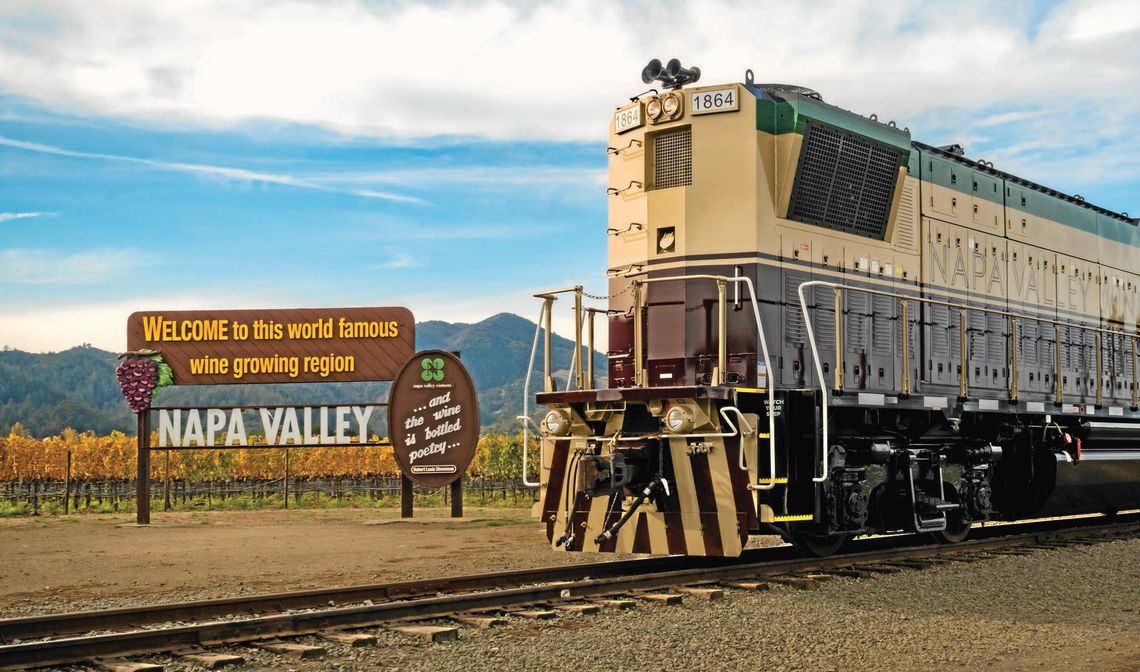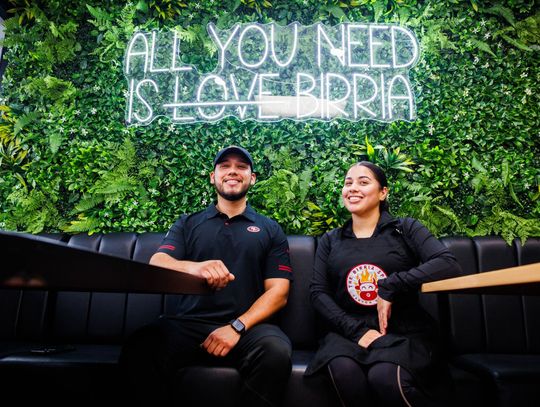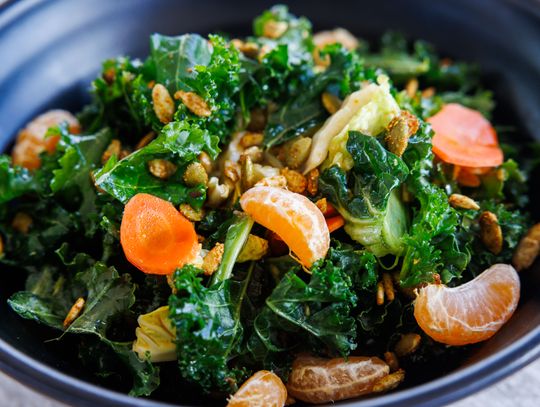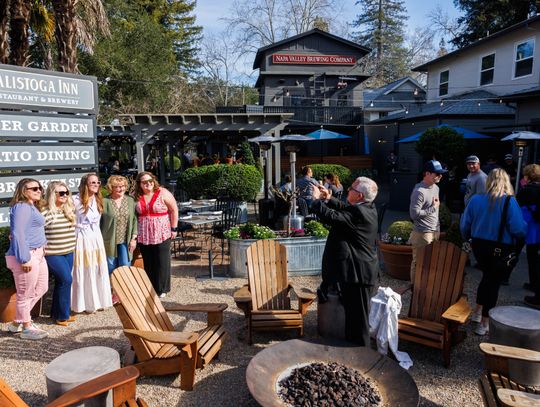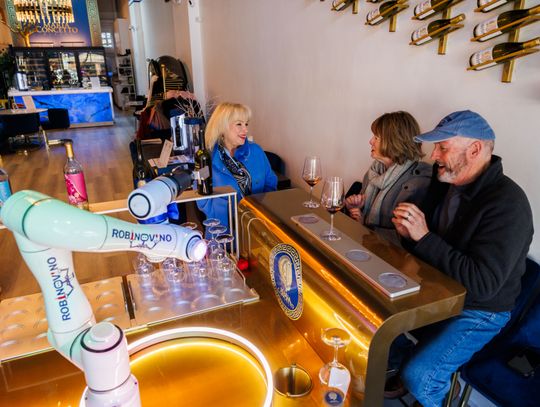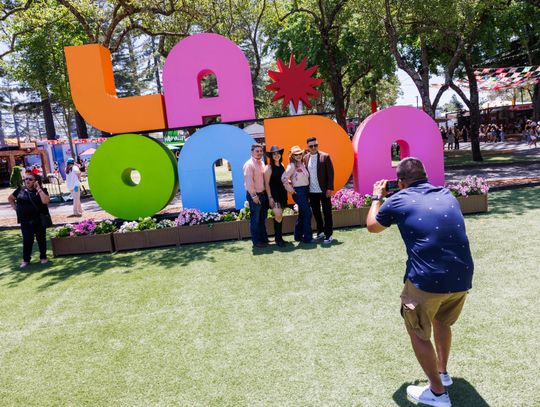What was a Napa Valley Wine Train locomotive doing on railroad tracks in Tennessee, Arkansas, Texas and Arizona this past October?
Just passing through was the answer.
Sharp-eyed train aficionados in those states spied something unusual on local rails that month: a shiny new Wine Train locomotive.
Rolling along amid a string of otherwise unremarkable rail cars, the wine country locomotive was headed on a 6,000-mile, two-month journey to downtown Napa.
Arriving in the Napa Valley, the locomotive became the Wine Train’s newest — and most expensive — addition to its fleet.
It’s also the Wine Train’s first “green” engine.
Using “cutting-edge” technology, the locomotive consumes less diesel fuel and cuts emissions by 90%, according to a news release from the Wine Train. The new locomotive is also quieter, smoother and more powerful than its older Wine Train peers.
Notably, the locomotive meets or exceeds the highest emission-control classifications of the Environmental Protection Agency and the California Air Resources Board.
“It feels great” to finally start using the new locomotive, said Nathan Davis, the Wine Train’s general manager.
The Wine Train has been owned by Noble House Hotels & Resorts Ltd. since 2015. Noble House originally hoped to get a new locomotive sooner but the COVID-19 pandemic temporarily interrupted those plans, according Davis.
“It’s been a long journey to get this thing here,” he said.
Named 1864 in honor of the Napa rail line’s founding year, the locomotive cost $2.4 million, said a representative from the Wine Train. It was made by Knoxville Locomotive Works in Tennessee, which explains why the train had to take a cross-country trip to get to California.
The 1864 locomotive does look different than the other Wine Train engines, said Davis. “We love how it looks different” than those classic locomotives, said the GM.
The front “nose” is boxier and more rectangular, instead of rounded as on a vintage train. The engine “cab” features more windows for better visibility.
“I think it’s really cool. It’s boxy, it’s
tough,” and at the same time shows off the
Wine Train’s familiar burgundy-gold-green
colorway, said Davis.
Weighing in at 275,000 pounds, the train produces 1,560 horsepower. Another noticeable difference is that the amount of smoke produced by the new engine is drastically reduced. Gone are the belches of thick black smoke as seen from other trains.
The addition of this new engine means that the Wine Train now has eight locomotives available to use.
Davis explained that the Wine Train normally uses two locomotives to pull its trains.
“The beauty of this is that we’re able to now run one locomotive” instead of two, because the 1864 engine is that much more powerful.
NEXT LOCOMOTIVES COULD COST $2.9 MILLION
This new “green” engine is the first but it won’t be the last. The goal is to buy three more near-zero-emission locomotives to fill out the fleet, according to an email statement from the Wine Train.
Ultimately, the older Wine Train engines, some dating back to 1942, will be phased out. Ideally, the rail line will add three more such engines by the end of 2025.
One thing is already for certain — the price is going up to about $2.9 million, “so we have to save up,” said Davis of the Wine Train.
Partial funding for the purchase of the 1864 locomotive was made possible by the Bay Area Air Quality Management District and the Carl Moyer Memorial Air Quality Standards Attainment Program providing grant funding for cleaner-than-required engines, equipment and other sources of air pollution, according to the Wine Train’s statement.
Sustainability is a core mission of the Noble House organization and also important to its customers, “so this is kind of putting our money where our mouth is,” Davis said.
The new locomotive could travel as fast as 90 mph, said Wine Train engineer Artemus Rogerson, but usually is kept to an easy 17 mph.
Rogerson said he grew up in Napa Valley and joined the Wine Train more than two years ago. Before that, he’d never worked on a train before. Today he’s trained in three key roles; conductor, engineer and dispatcher.
“It’s the coolest job,” Rogerson said. “I get to drive the train up and down Napa Valley” through its scenery. “I plan to work here until I retire.”
Davis said that the Wine Train employs 130 people.

